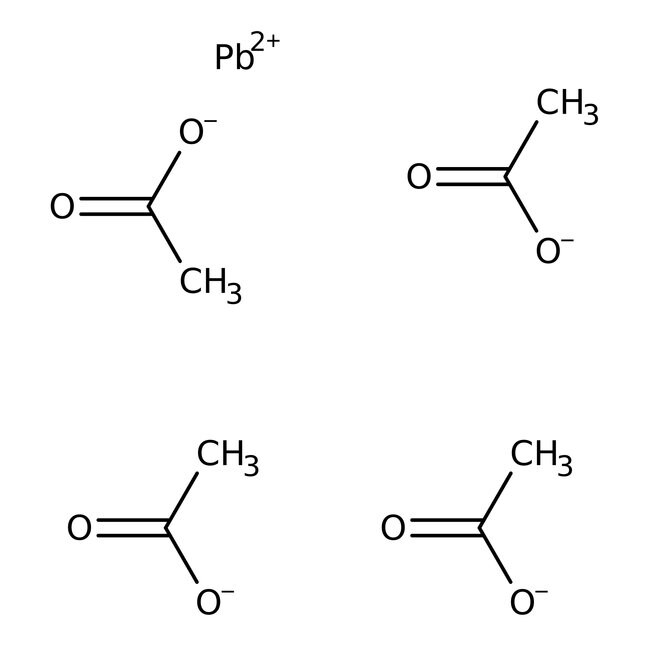Search Thermo Fisher Scientific
Lead(IV) acetate, 96% (dry wt.), stab. with 5-10% glacial acetic acid, Thermo Scientific Chemicals



Lead(IV) acetate, 96% (dry wt.), stab. with 5-10% glacial acetic acid, Thermo Scientific Chemicals
Chemical Identifiers
Specifications
Description
This Thermo Scientific Chemicals brand product was originally part of the Alfa Aesar product portfolio. Some documentation and label information may refer to the legacy brand. The original Alfa Aesar product / item code or SKU reference has not changed as a part of the brand transition to Thermo Scientific Chemicals.
Lead(IV) acetate is an important oxidizing agent and a source of acetyloxy group used in organic synthesis. For example, 1,4-dioxene is prepared from dioxane involving 2-acetoxy-1,4-dioxane as an intermediate. Similarly, it is used for the preparation of bis(trifluoromethyl)diazomethane from hexafluoroacetone hydrazone. It also reacts with alkenes, alcohols having a delta-proton and di-n-butyl d-tartrate to get gamma-lactones, cyclic ethers and n-butyl glyoxylate respectively. It induces the cleavage of 1,2-diols to the corresponding aldehydes or ketones. It is actively involved in the Kochi reaction for the decarboxylation of carboxylic acids to alkyl halides and used as an alternative reagent to bromine in the Hofmann rearrangement.
Solubility
Soluble in water, ethanol, chloroform, benzene, nitrobenzene, tetrachloroethane, nitric acid, hot acetic acid and hydrochloric acid.
Notes
Air and moisture sensitive. Store in cool place. Keep the container tightly closed in a dry and well-ventilated place. Incompatible with alcohols, strong acids and strong reducing agents.
Figures
Documents & Downloads
Certificates
Frequently asked questions (FAQs)
Citations & References
Safety and Handling
Classification of the substance or mixture
CLP classification - Regulation(EC) No 1272/2008
Label Elements
Signal Word
Danger
Hazard Statements
H302 + H332 - Harmful if swallowed or if inhaled
H360Df - May damage the unborn child. Suspected of damaging fertility
H373 - May cause damage to organs through prolonged or repeated exposure
H410 - Very toxic to aquatic life with long lasting effects
Precautionary Statements
P264 - Wash face, hands and any exposed skin thoroughly after handling
P280 - Wear protective gloves/protective clothing/eye protection/face protection
P301 + P330 + P331 - IF SWALLOWED: rinse mouth. Do NOT induce vomiting
P304 + P340 - IF INHALED: Remove person to fresh air and keep comfortable for breathing
P312 - Call a POISON CENTER or doctor if you feel unwell
Additional EU labelling
Restricted to professional users